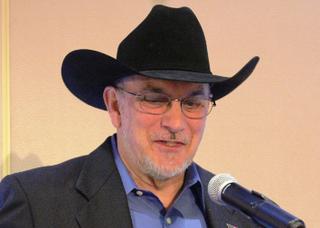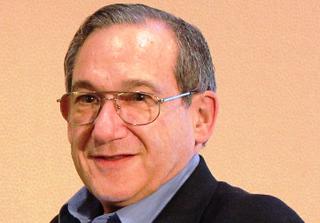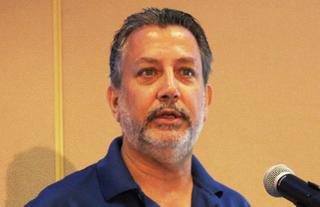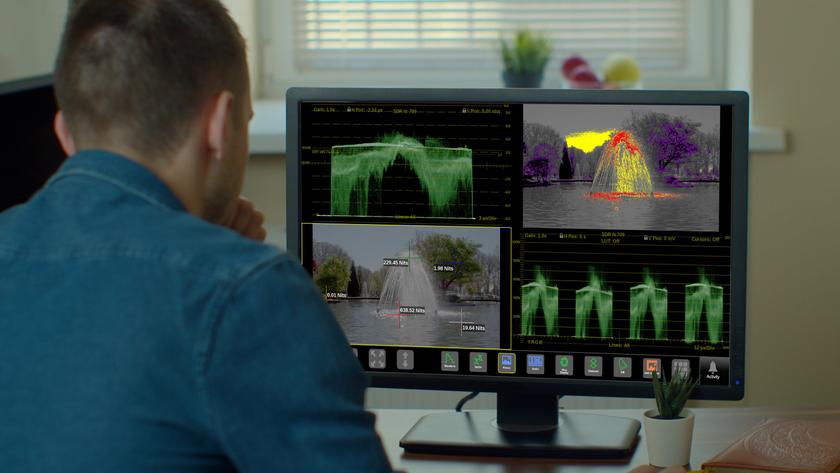IEEE Broadcast Symposium Part 1: Repack
In recent years I’ve noticed the IEEE Broadcast Technology Society has added more presentations on the practical aspects of broadcast engineering to its annual Broadcast Symposium. That was evident this year at the symposium in Alexandria, Va., with several presentations to help broadcast engineers deal with designing, permitting and building the new TV broadcast facilities required as a result of the FCC’s incentive auction and repack.
As usual, the symposium also offered ample opportunity for engineers to share their knowledge and experience in the presentations and during the breaks, reception and meals with few of the other distractions of larger conferences.
This month I’ll focus on some of the spectrum repack presentations at the symposium that took place on Tuesday morning. Look for coverage of other topics, including drone antenna measurements, in future columns.
PRACTICAL REPACK
Matt Sanderford, president of the Dallas-based engineering firm Marsand, presented the most comprehensive, unbiased overview I’ve seen of the practical side of converting a TV transmitter site from one channel to another. Anyone who thought this would be a simple process should take a look at Sanderford’s “Practical Implications of the Repack.”

Matt Sanderford
Sanderford covers the process starting with FCC filings, developing a plan to implement the repack and items to consider when designing the repack facility. Choices for items ranging from transmitters (tube or solid state, liquid or air-cooled) to RF switching (motorized switch or patch bay) and even RF reject loads (oil-filled, liquid-cooled, air-cooled, etc.) are compared.
One point I (and I suspect), many other engineers had not realized is that changing channels requires FAA notification even if the tower height or lighting isn’t being changed! Sanderford reminded us that FAA Form 7460-1, line 21, requires listing frequency and power and that power and frequency changes do not need approval and won’t cause delays, just notification and the amended form.
Regarding the choice of transmitter types, Sanderford noted that high-power liquid-cooled solid-state transmitters have around 40 percent system efficiency, compared with around 34 percent for IOT transmitters. While the tube transmitters may have lower capital cost, they require more maintenance and tube replacement cost is high.
I’ve only touched on a few areas in Sanderford’s paper. The presentation is available to IEEE Broadcast Symposium attendees and may also be available from Marsand. Check Marsand’s website, www.marsand.com for contact information.
INTERFERENCE ISSUE
Merrill Weiss, president of Merrill Weiss Group LLC, discussed “Factors Affecting Mask Filter Selection and Channel 14 Operations in the FCC Spectrum Repack.” Weiss’s paper was not available in the proceedings, but I took notes.
A key point of the presentation was that stations should be using eight-pole mask filters rather than six-pole mask filters in their repack facilities. One reason, as Sanderford mentioned in his presentation, is that an eight-pole filter will allow use of the full OFDM bandwidth available with ATSC 3.0. Weiss focused on interference as the primary reason.

S. Merrill Weiss
TV transmitters, whether using 8VSB or OFDM, will have some energy outside the channel due to intermodulation caused by non-linearity in the transmitter. He pointed out that an eight-pole filter provides a 10 dB reduction in energy into adjacent channels.
When a TV station radiates energy into the adjacent channel, it creates interference on the channel that cannot be eliminated by filtering at the receiver. This will be important after the repack as there will be more stations on adjacent channels.
It will become more important after the transition to ATSC 3.0 for stations that want to use high data rate and higher-order modulation to obtain more bandwidth for additional program streams.
Those signals will require a higher signal-to-noise ratio for reception than today’s ATSC 1.0 signals and on-channel noise from adjacent channel stations without sufficient mask filtering could limit the usefulness of the high data-rate modes available in ATSC 3.0. Be a good neighbor, use an eight-pole mask filter!
Weiss also outlined the issues facing stations moving to Channel 14. Typically a 12-pole mask filter is required on Channel 14. Power has to be down more than 100 dB at the channel edge, as there is no guard band between Channel 14 and land-mobile operations in the 450–470 MHz band. Channel 14 construction permits require notification of potentially affected land-mobile licensees. Documentation must be submitted showing no interference to land-mobile radio services before program test authority can start.
This could be a major problem for Channel 14 stations at sites shared with land-mobile operations. Passive intermodulation (PIM) can cause interference even if the Channel 14 transmitter is perfectly clean. Resolving PIM problems can require cleaning up the entire environment at the site—eliminating rusty bolts, corroded connections and other PIM generating components—as well as installing filters on land-mobile filters and transmitters.
Dennis Wallace, a partner and technical consultant with Meintel, Sgrignoli and Wallace LLC (MSW), described a creative solution to WETA’s Channel 14 assignment in Washington D.C. in his presentation “Creative Solutions to Post-Repack Channel Assignment Problems.” MSW analysis showed there were 5,803 land-mobile facilities within 100 km that would be impacted by WETA on Channel 14. WETA’s original Form 399, available using the Public Search feature in the FCC LMS, shows the station determined the cost of a move to Channel 14 at $48,050,047.50 (total), $40 million of which was for land-mobile remediation.
The MSW solution was to find another channel for WETA, but in a market as congested as the northeast it meant other stations had to change channels and a distributed transmission system (DTS) was required to allow Maryland Public TV stations to use one channel to serve an area previously served by multiple channels. The window for filing for channel changes has ended, but I would not be surprised if some stations assigned to Channel 14 have to consider other channels, potentially requiring cooperation from other stations, before the repack is complete.
Wallace’s presentation is available in the proceedings and may be available from MSW. Also see the MSW website, http://mswdtv.com/dtv-repack, for more information on their repack work.
CHANNEL SHARE
Some stations sold their spectrum in the auction and will share a channel with another station. While I’ve described the basic concept and how bandwidth can be allocated in a previous column, I haven’t focused on PSIP.

Dave Catapano
David Catapano, senior vice president of engineering at Triveni Digital, provided an excellent overview of ATSC 1.0 PSIP for those who may have forgotten how it works. He then looked at some of the complications that arise when two stations with different major channel numbers and different program guides share the same multiplex and RF channel.
One of the benefits of the ATSC A/65 PSIP standard is that key data is duplicated in different tables, making it easier for receivers to find a channel, display the proper video and play the proper audio along with the correct program guide and closed-captioning information. The downside is that if data for a program or PSIP element in one table doesn’t match that in another table, the receivers can do unpredictable things. When adding a second channel, with a new major channel number and new site of guides, stations must keep data consistent across tables and avoid mistakes such as duplicating source IDs in the VCT.
Catapano pointed out that it is important to maintain unique PMTs, PIDs and Program Numbers, and EIT/ETT PID/ID pairs. This can get complicated if output from two PSIP generators is being combined at the multiplexer.
Catapano offered some best practices for shared station PSIP, including using Huffman coding to reduce bandwidth, adjusting EIT/ETT table timing (following A/69), optimizing the number of EITs (they may vary with virtual channel) and limit descriptive info to what’s practical. I’ve only covered a small part of Dave Catapano’s presentation, which can be found in the symposium proceedings and should be available from Triveni Digital’s website, www.trivenidigital.com.
As always, your comments and questions are welcome. Email me at dlung@transmitter.com.
For more information on the repack, visit TV Technology's repack silo.
Get the TV Tech Newsletter
The professional video industry's #1 source for news, trends and product and tech information. Sign up below.

Doug Lung is one of America's foremost authorities on broadcast RF technology. As vice president of Broadcast Technology for NBCUniversal Local, H. Douglas Lung leads NBC and Telemundo-owned stations’ RF and transmission affairs, including microwave, radars, satellite uplinks, and FCC technical filings. Beginning his career in 1976 at KSCI in Los Angeles, Lung has nearly 50 years of experience in broadcast television engineering. Beginning in 1985, he led the engineering department for what was to become the Telemundo network and station group, assisting in the design, construction and installation of the company’s broadcast and cable facilities. Other projects include work on the launch of Hawaii’s first UHF TV station, the rollout and testing of the ATSC mobile-handheld standard, and software development related to the incentive auction TV spectrum repack. A longtime columnist for TV Technology, Doug is also a regular contributor to IEEE Broadcast Technology. He is the recipient of the 2023 NAB Television Engineering Award. He also received a Tech Leadership Award from TV Tech publisher Future plc in 2021 and is a member of the IEEE Broadcast Technology Society and the Society of Broadcast Engineers.











